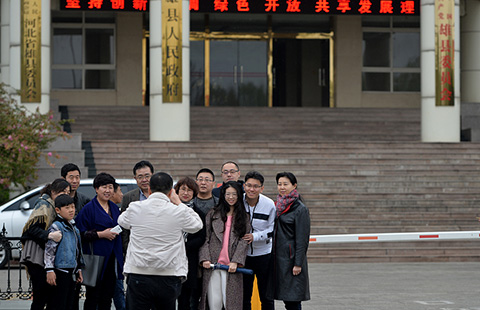China remains powerhouse for world growth
BEIJING — Once again, the naysayers were proved wrong by China's better-than-expected economic growth in the first quarter, and they might also be surprised by the economy's optimized structure.
Official data showed that China's GDP increased 6.9 percent year-on-year to hit 18.07 trillion yuan ($2.63 trillion) in the first quarter, beating estimates of 6.8 percent.
The growth was above the full-year target of "around 6.5 percent" and the 6.8-percent increase registered in the fourth quarter of 2016, according to the National Bureau of Statistics.
China has served as an important stabilizer of the world economy and powerhouse for global growth. Against the backdrop of a sluggish world economy, China's GDP expanded 6.7 percent year-on-year in 2016, contributing to more than 30 percent of global economic growth, much higher than each of the other major economies.
With expanded economic size, the 6.9-percent growth in Q1 represented around 30 percent of global growth in the first three months.
Although China has geared down to a medium-high level of growth under the "new normal," those betting on a collapse in China could be unwise because the country's economic fundamentals are sound and structure is optimizing despite the slowdown.
In the first quarter, industrial output, fixed-asset investment, retail sales and employment all held steady, providing a solid foundation for growth.
Meanwhile, supply-side structural reform was intensified as efforts in cutting overcapacity, reducing inventory, deleveraging, lowering costs and strengthening weak links have made progress.
The economic structure is becoming more sustainable and new drivers for growth are posting a stronger presence.
The industrial structure is increasingly dominated by the service sector and consumption, a very different situation from the previous over-reliance on the industrial sector and investment.
In the first quarter, the value added of the tertiary industry accounted for 56.5 percent of GDP, 17.8 percentage points higher than that of the secondary industry.
New driving forces grew fast in Q1. The value added of strategic and emerging industries rose by 10.3 percent year-on-year, 3.5 percentage points faster than that of the industrial enterprises above a designated size.
Moreover, growth became greener. Energy consumption per unit of GDP dropped by 3.8 percent year-on-year in the first quarter, according to the National Bureau of Statistics.
Looking ahead, China will continue to be the powerhouse of world growth despite challenges including financial risks.
"As it enters the 13th Five-Year Plan period (2016-2020), the Chinese economy continues to grow fast by international standards. While growth is slowing gradually, GDP per capita remains on course to almost double between 2010 and 2020. As a result, the Chinese economy will remain the major driver of global growth for the foreseeable future," said the Organization for Economic Co-operation and Development (OECD) in its 2017 Economic Survey of China.
"However, China's growth model has led to misallocation of capital and falling investment efficiency, and to excess capacity in some manufacturing industries and in the real estate sector, which needs to be worked off," the OECD warned.

















